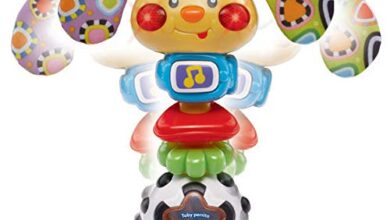30 weeks pregnant

Every week, pregnancy has its milestones and relevant aspects, which prepare both the mother and the fetus for the moment of birth. At week 30, it can already be said that there is a 7-month gestation and many doubts may arise in the mind of the future mother.
No matter how many times pregnancy is experienced, it will always be different, even for the same woman. So don’t be surprised if you often find yourself wondering what happens to my pregnancy and my baby from day to day? This apparent obsession is nothing more than a reflection of how aware you are of the process you are going through and, after all, that journey in which you and the baby are together will be unrepeatable, so it is convenient to live it fully.
In this context, there are some points that characterize pregnancy at week 30 and that coincide in all women. We will talk about them in the following lines, seeking to clarify some questions that could cause concern.
We will start by answering the most common question: 30 weeks pregnant, how many months is it? The answer is that it is about seven and a half months. However, in relation to the gestation period, this number of weeks corresponds to 7 months, considering that approximately 2 weeks elapsed from the beginning of the menstrual cycle to conception.

What changes does the baby have?
A 30-week gestation baby already has defined facial features . If an ultrasound is performed, you will be able to perceive some features of your face that will accompany you throughout your life. For example, the shape of your lips, the proportion of your nose, etc.
If we analyze the weight of the fetus by weeks, we can find that your baby has already exceeded one kilogram and its length is approaching 40 centimeters. He is still small, but remember that day by day he grows and gains more weight.
As for his changes, it should be mentioned that the lanugo has begun to disappear, it no longer has that velvety appearance of previous weeks and, if it is a boy, his testicles will begin to adopt their definitive place. In addition, the fat called vernix caseosa will continue to add in layers to protect the baby and help the baby pass through the birth canal more easily.
Another important aspect is that some babies can already begin to turn, to adopt the optimal fetal position for birth , that is, with the head facing the mother’s pelvis. However, if your baby reaches the 31st week of pregnancy without making any changes, don’t panic. She is completely normal and there is still time. Some babies may experiment with other fetal positions before acquiring the most convenient one.
As for his sensory development, it is estimated that the baby is already capable of differentiating sweet and salty tastes, his ability to listen has been accentuated and he perceives low frequencies well (such as heartbeats).
What’s new for the mother?
Hormones are still the ones that control the pregnancy and at this stage they can make the mother feel exhausted , even though she has not gained much weight. In addition, this increase in hormones also has an effect on fluid retention, making it appear that the mother has gained a few extra kilos, so her face has a more rounded appearance.
Contractions at week 30 are more likely, with the Braxton Hicks contractions typical of this stage, which are mild and temporary. They should not alert the mother, unless they last for a long period of time, intensify or are painful.
In addition, to prepare for childbirth (which will occur in 10 weeks), the pelvis becomes more flexible, its diameter gradually increases, and food intake must be chosen more carefully, to reduce digestive discomfort, such as gas, irritation or difficulty evacuating.

Some common ailments and how to relieve them
Because the 30-week-pregnant fetus has grown large enough for the uterus to expand considerably, some blood vessels may become compressed. This interferes with normal blood circulation, so it is common to experience tingling in certain areas of the body. In fact, for some women, hand swelling can be worse at specific times of the day, so it may be best to remove tight rings and perform exercises that help improve blood flow.
To do this, the mother can raise the hands, as well as the feet, to counteract the swelling in the ankles and allow the blood to return more easily to the heart.
On the other hand, it is common for the baby’s movements to be slower, but also more intense. For example, a little kick to the diaphragm may be more bothersome than before, and pressure on the bladder may intensify the mother’s urge to urinate.
In this phase, it is advisable to avoid infusions with caffeine, since, among other things, they can excite the baby too much and make him more active, causing more sudden movements that the mother will clearly perceive.
Seeking the welfare of the mother
At this point, the increase in the belly can force the mother to change her position when sleeping, so it would be a good idea to try some pregnancy pillows, which allow you to get quality rest.
On the other hand, to mitigate the discomforts related to fluid retention in the 30-week pregnancy, it is advisable to take care of salt intake and maintain good hydration. Take care of your skin by applying balms, especially in the belly area, which will be the one that will have the most changes from this moment on. This way, you could experience less itching in the face of the imminent expansion of the uterus. Also, don’t forget to keep moving, walking can be very beneficial if there are no medical restrictions.



